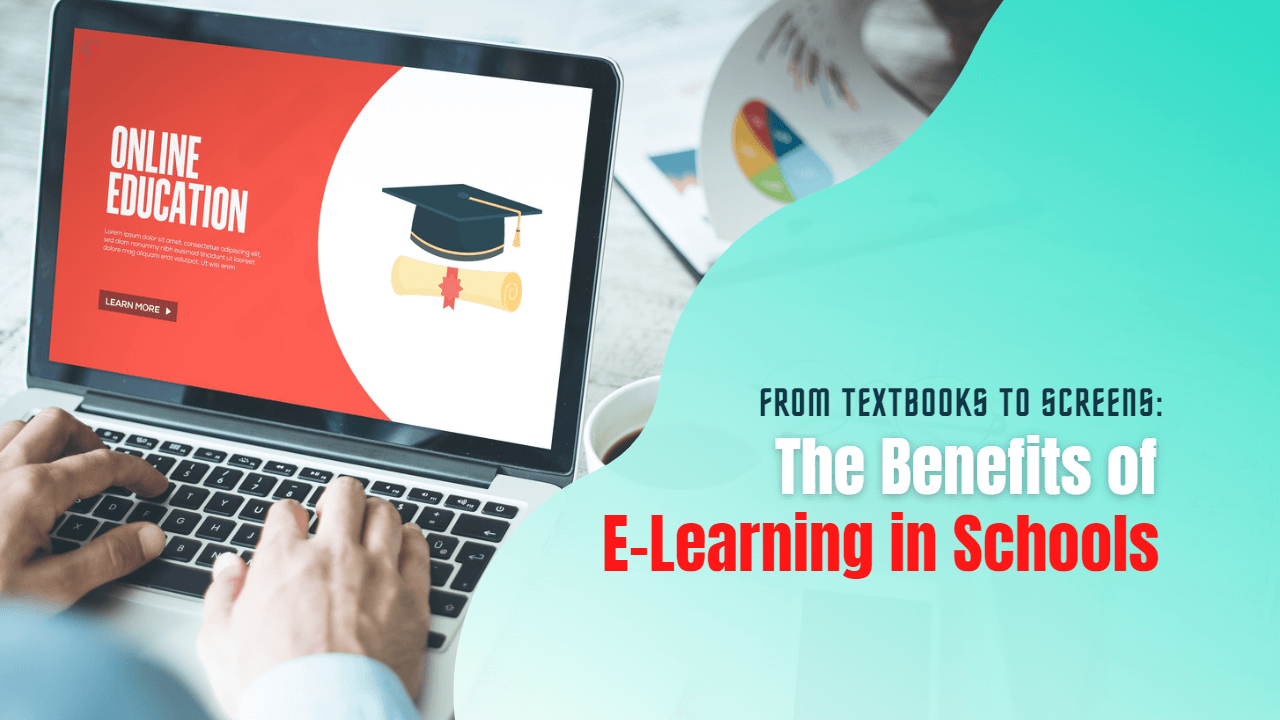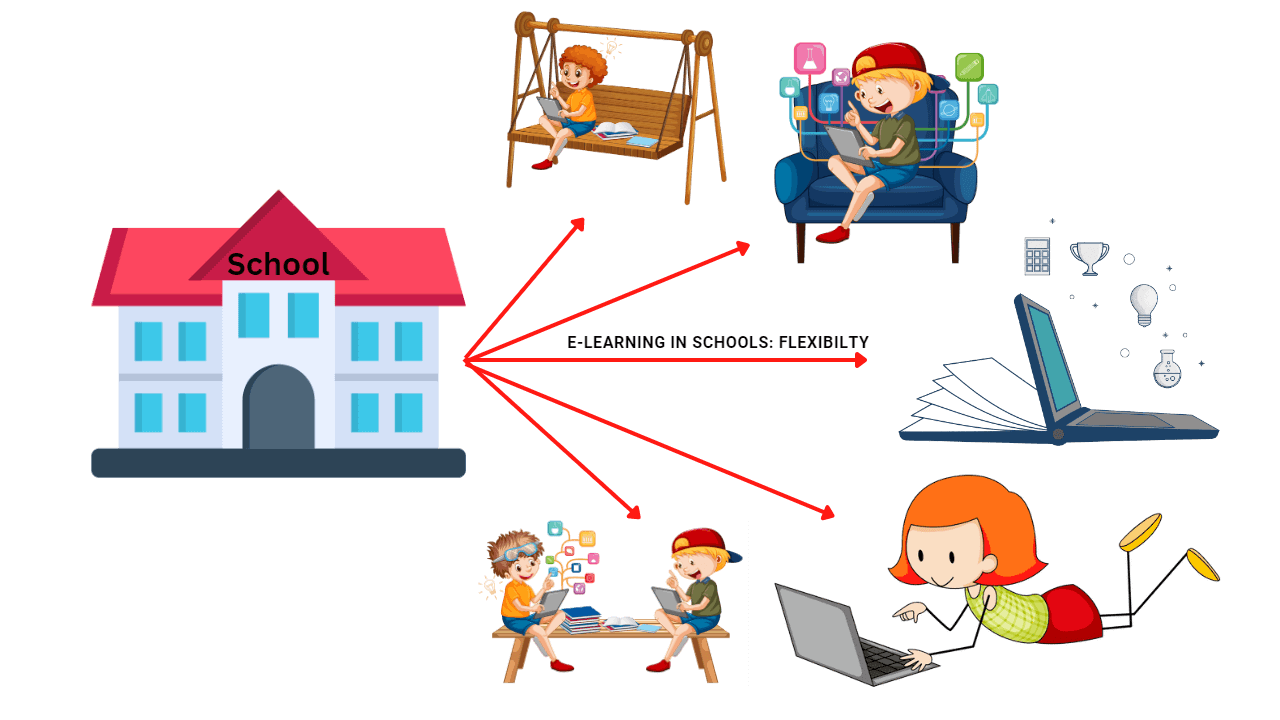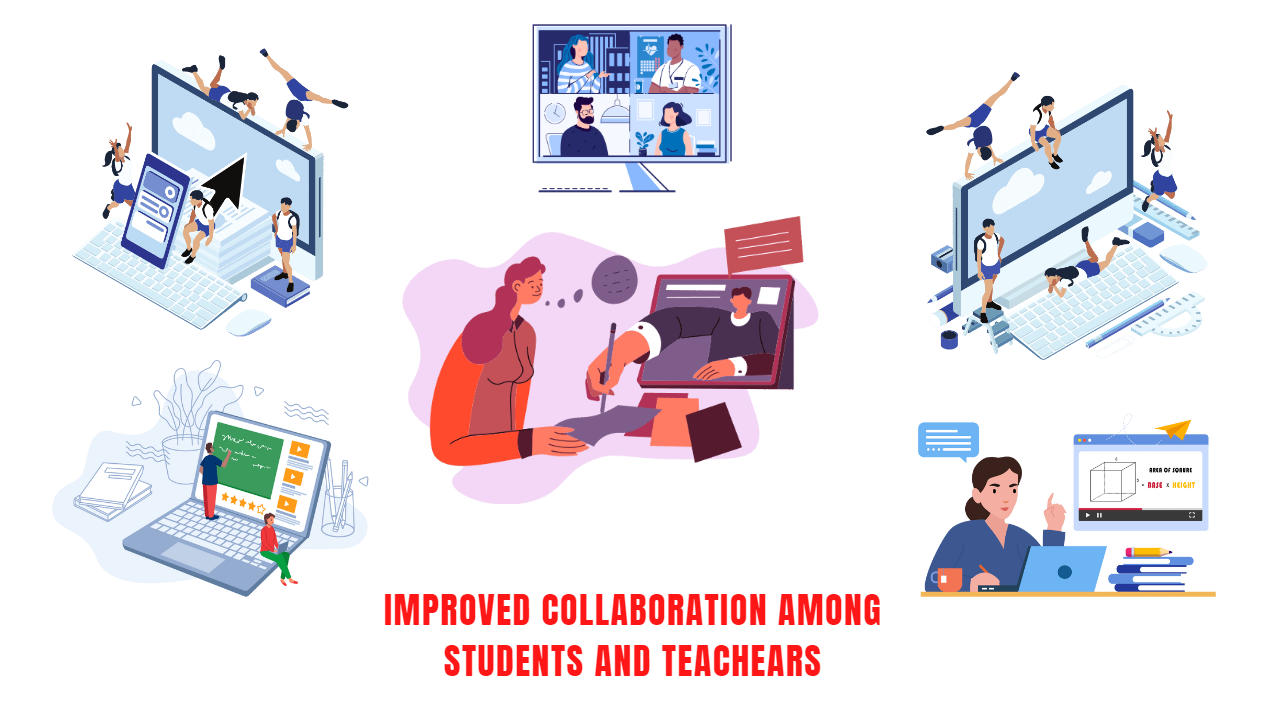Textbooks to Screens: Benefits of E-Learning in Schools

E-learning has become a popular teaching method in recent years and is now being applied to school students. E-learning in schools offers numerous benefits such as convenient access to educational materials, personalized learning experiences, flexibility in scheduling, cost-effectiveness, and the ability to learn at one's own pace. It also promotes the use of technology in education and enhances student engagement, participation, and collaboration.
Flexibility: eLearning allows students to learn at their own pace and on their own schedule, providing the flexibility necessary to balance academic work with extracurricular activities, family commitments, and other responsibilities. e-learning can be used to support remote learning. With the current scenario of pandemics, e-learning is an alternative to traditional classroom instruction, which can be beneficial for school students and their families. For example, teachers can use video conferencing tools to conduct live classes and provide school students with real-time instruction and support.

Cost-Effective: eLearning reduces the cost of traditional classroom-based learning by eliminating the need for textbooks, transportation, and other related expenses.
Increased Access: eLearning makes education accessible to students who are geographically isolated or who may have difficulty attending traditional classes due to disabilities or other limitations. e-learning can be used to provide access to a wider range of resources. For example, teachers can use online libraries, databases, and other digital resources to provide school students with access to a wider range of materials than what is available in the physical classroom. This can help to enrich the learning experience for school students and expose them to a wider range of information.
Personalized Learning: eLearning allows educators to tailor instruction to student's individual learning styles and needs, providing a more personalized and engaging learning experience. e-learning can be used to personalize instruction. For example, teachers can use technology to track each student's progress and adjust their instruction accordingly. This can help school students who are struggling with certain concepts to receive additional support, while those who are excelling can be challenged with more advanced material.
Improved Collaboration: eLearning facilitates collaboration and communication among students and educators, enabling them to share ideas, resources, and feedback more easily. e-learning can be used to promote collaboration and communication. For example, teachers can use online tools, such as discussion boards and chat rooms, to facilitate group work and allow school students to communicate and collaborate with each other. This can help to develop social skills, teamwork, and problem-solving abilities in school students.

Increased Retention: eLearning can lead to increased retention of information and improved performance on assessments, as students are able to review course materials at their own pace and as often as needed. eLearning can be used to enhance traditional classroom instruction. For example, teachers can use interactive digital resources, such as educational games and videos, to supplement their lessons. This can make learning more engaging and interactive for school students, who may benefit from a variety of teaching methods.
Lastly, e-learning can be used to support language learning. For example, teachers can use digital resources to provide school students with interactive and immersive language learning experiences. This can help to support the development of language skills in school students, which is crucial for their future academic success.
In conclusion, e-learning can be a valuable tool for teaching school students. It can provide school students with a more engaging and interactive learning experience, personalize instruction, access a wider range of resources, promote collaboration and communication, and support language learning and remote learning.
If you're interested in learning management system (LMS) software, please feel free to check out our "Contact Us" page for more information and to get in touch with our team. We'd be happy to discuss your needs and provide you with any information you may need to make an informed decision.
